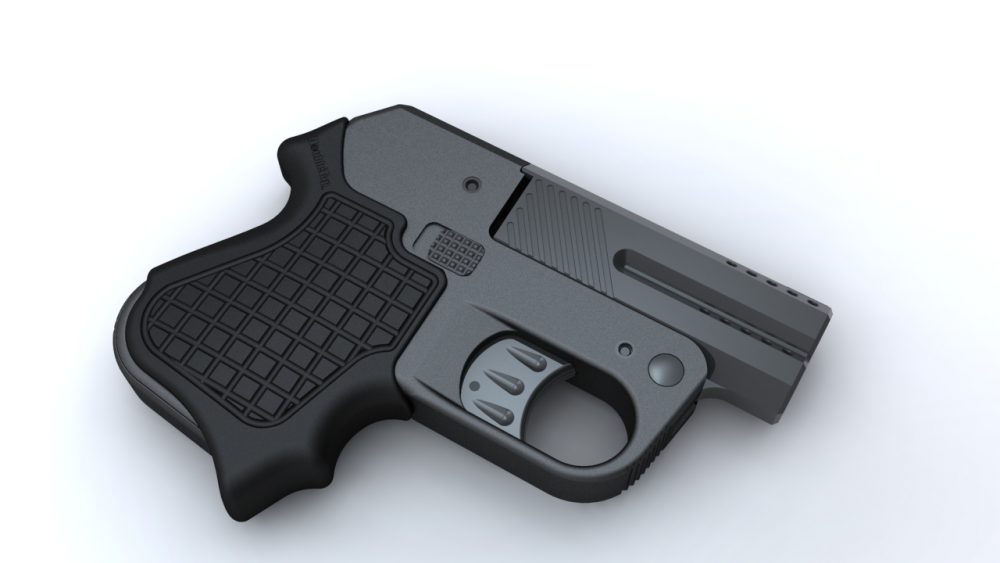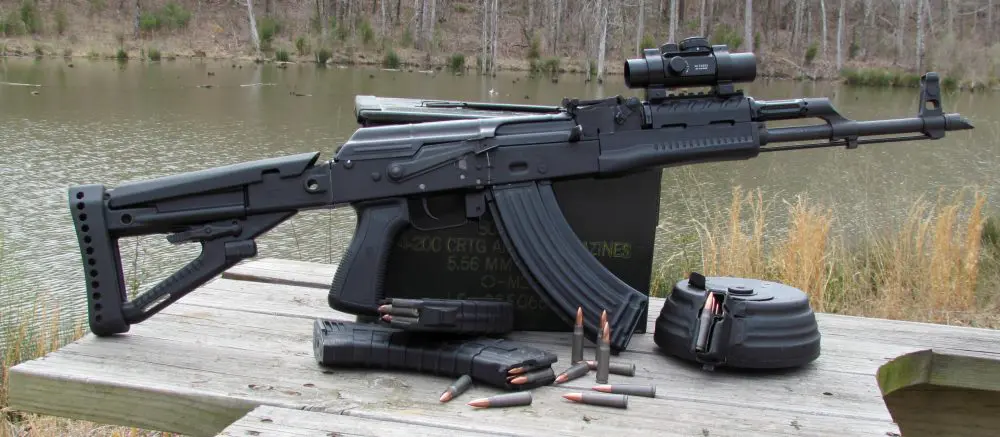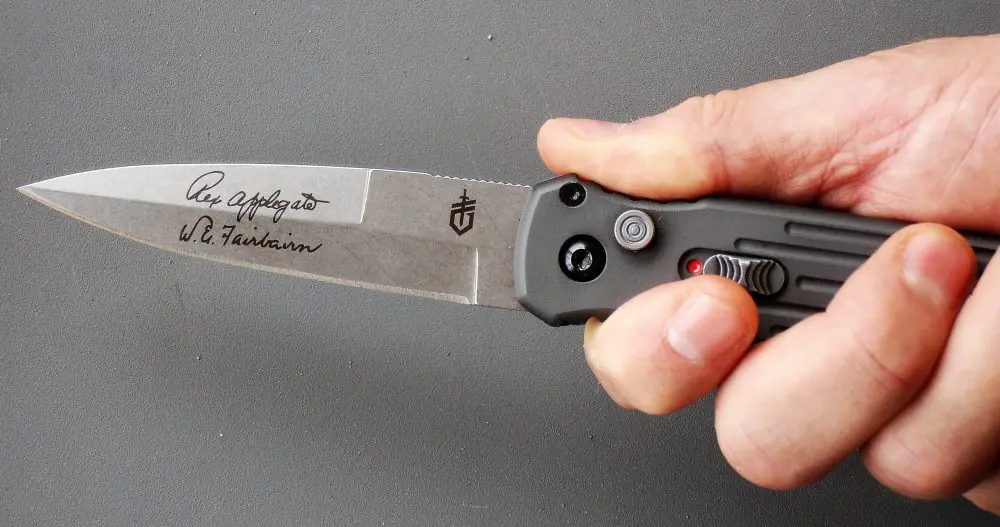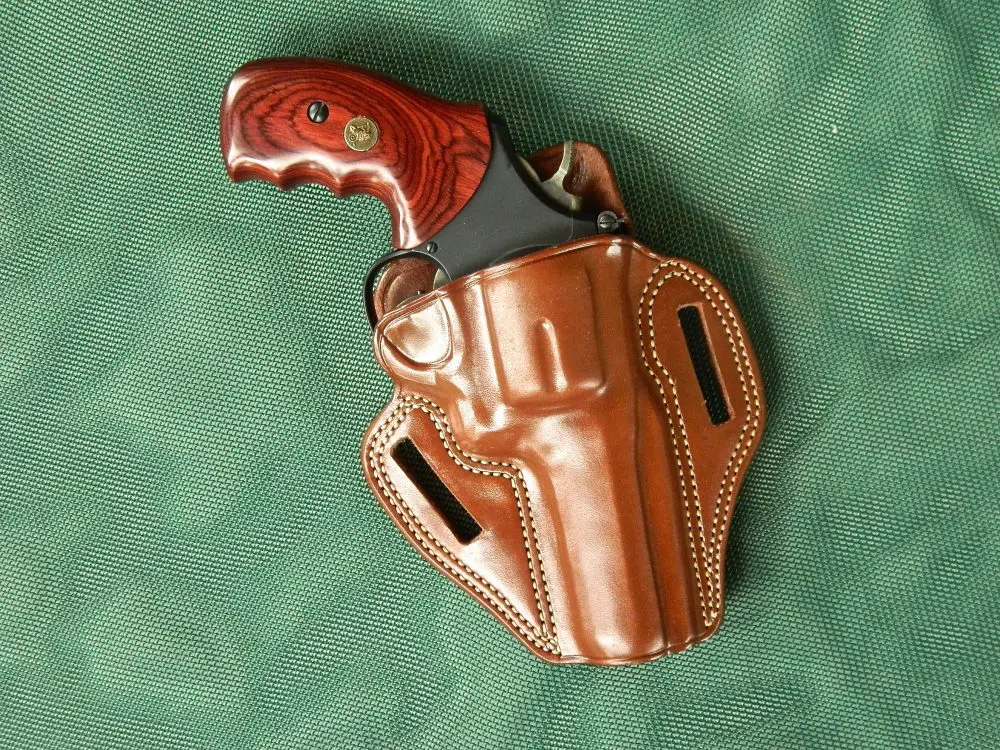Left side of DoubleTap Tactical Pocket Pistol.
In the last year, a two-shot derringer-type pistol—the DoubleTap™ Tactical Pocket Pistol from DoubleTap Defense—came to the market. Wanting to see for myself what all the fuss was about, I placed an order.
The small pistol is available with either a 7075 aluminum frame or 6AL 4V titanium frame. The aluminum version is Type 3 hard coat anodized, and the titanium model has a Cerakote finish.
For a gun of this type, it is not inexpensive: The DoubleTap Aluminum non-ported model retails for $499, with the ported model at $569. The DoubleTap Titanium non-ported model retails for $729 and the ported model for $799. Non-ported caliber conversion kits are $199 and ported kits $269. I requested the ported aluminum version in .45 ACP and a ported conversion kit in 9mm for this report.
The pistol comes in a foam-lined cardboard box with one set of barrels, two- and six-round speed strips, padlock and manual.
DoubleTap Training Grip may make pistol more comfortable to fire.
Table of Contents
SPECS
The DoubleTap tips the scales at a mere 12 ounces and is only 5/8-inch wide. The pistol grips’ design is inspired by the fragmentation grenade pattern. At the bottom of the frame is a trap door that will hold two extra rounds in a speed strip.
Operation is double-action only, allowing for second strike capability. The three-inch barrels tip up for loading/unloading by pulling back on an ambidextrous latch. The barrels are interchanged by pushing out a takedown pin at the top leading edge of the trigger guard. This pin is not captured by a detent such as found on the AR-15. If barrels are changed in the field, care should be taken not to lose it.
According to DoubleTap Defense, the derringer has a 12- to 14-pound trigger pull. The test sample was at least 14 pounds—it felt heavier—and unquestionably the worst trigger I have ever used on a defensive arm.
Technically, the DoubleTap has sights—technically. The rear sight is a very shallow square at the rear of the frame. The front sight is roughly the same height as two credit cards in thickness.
The DoubleTap is not +P rated, eliminating many of the better performing 9mm and .45 ACP loads available. In testing, I used 9mm 115-grain JHP and .45 FMJ loads, both from Double Tap Ammunition (not affiliated with DoubleTap Defense).

RANGE REPORT
I started off with the .45 ACP. In reading reports and watching videos on the DoubleTap, one theme was repeated over and over: “You’ll feel the recoil.” Guess what? You’ll feel the recoil from a .22 pistol—shooting the DoubleTap was nothing short of painful. After only eight rounds of standard-velocity .45 ball, my right hand felt somewhat numb and the palm was swollen.
The pistol, at least for me, points unnaturally high and I had to make a conscious effort to bring it down onto target.
Switching to the 9mm, recoil as expected was less, but recoil flip was still fairly substantial. On a side note, when I first switched to 9mm, I placed a two-round speed strip in the trap door in the frame and intended to see how quickly the pistol could be loaded.
After firing the two chambered rounds, I released the barrels only to find they were firmly stuck in the chamber. I had to resort to pushing the cases out from the muzzle with a cleaning rod.
In terms of accuracy, because of the stacked barrels, point of impact will not be the same. At seven yards I obtained roughly eight-inch groups. At a more realistic distance of three yards, groups were around four inches—about what I’d expect from other defensive handguns at 25 yards.

CATCH-22
In my opinion, the DoubleTap Tactical Pocket Pistol suffers from an unavoidable catch-22: On the one hand, with the terrible trigger and lack of sights, one needs to practice with it to gain proficiency it if is going to be pressed into service as a defensive piece. On the other hand, it hurts so much to shoot that practice will neither be often nor of a quality nature.
It has been said that a small backup gun is often carried but seldom shot. I have always believed that practice with the backup is every bit as important as practice with the primary, because if the situation has deteriorated to the point it is needed, things have gotten bad—real bad—and proficiency with the backup is paramount.
TRAINING GRIP
As I wrapped up this report, it came to my attention that DoubleTap Defense has developed a Training Grip for customers’ comfort. The slip-on oversized rubber grip, made from Santropene, features a padded backstrap, the same frag pattern, and a two-finger groove on the front side. The non-slip surface allows for greater control and safety, even in wet environments. The padding absorbs shock and reduces muscle fatigue.
However, the Training Grip is not ideal for concealed carry in a pocket, because the rubber may not release easily from a pants pocket in times of emergency. If worn in a holster—although I have not tried it—it sounds as if it would be a worthwhile accessory.
If pointability, accuracy, more than two shots, quick reloading, and meaningful practice are important to you, the DoubleTap will not be your cup of tea. But if light weight and a thin profile are your primary concerns in a defensive pistol, the DoubleTap may meet your requirements.
SOURCES:
DoubleTap Defense LLC
(855) 243-4937
www.doubletapdefensellc.com
Double Tap Ammunition
(866) 357-10MM
www.doubletapammo.com







